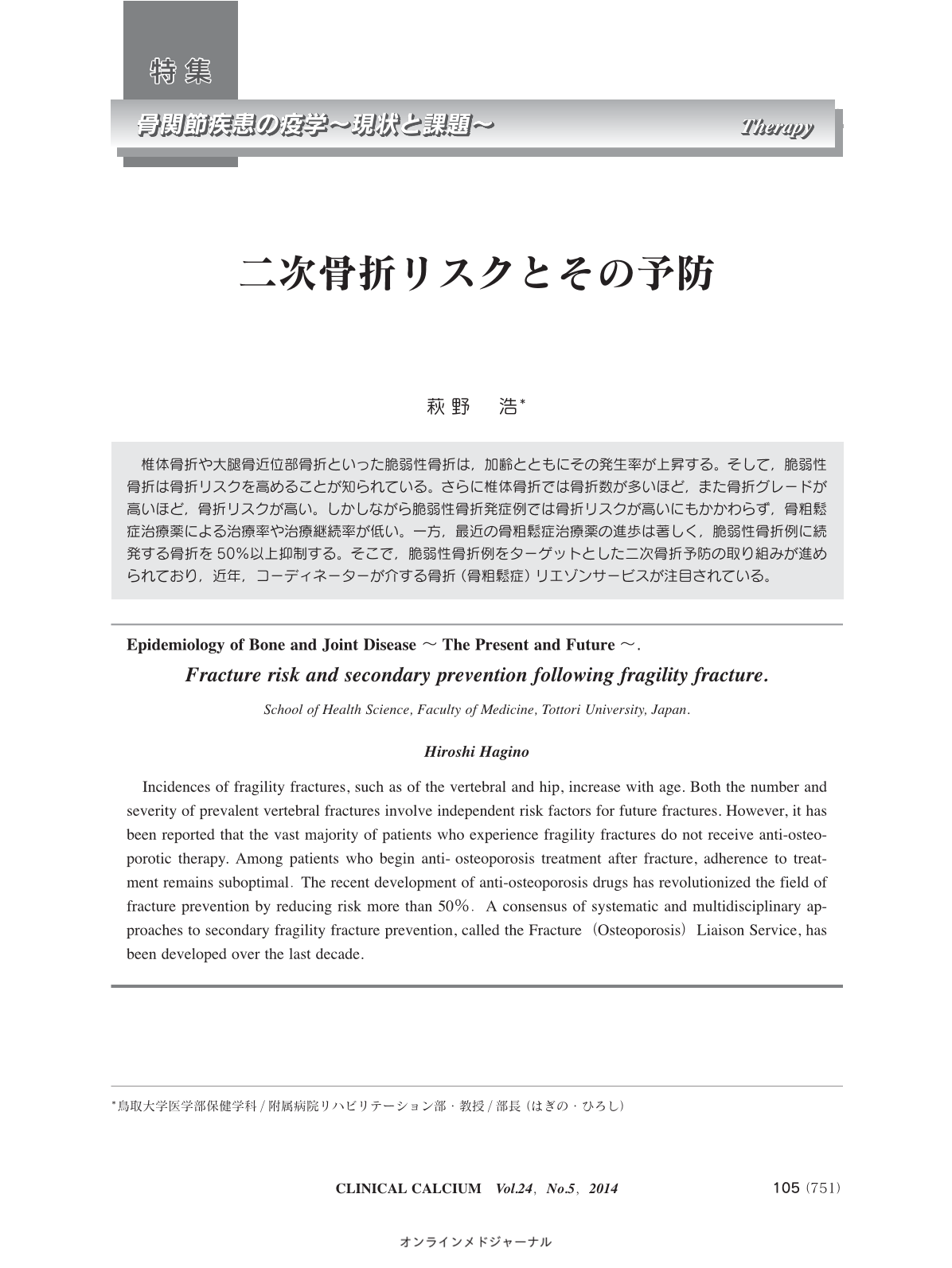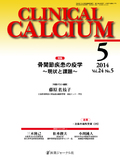Japanese
English
- 有料閲覧
- Abstract 文献概要
- 1ページ目 Look Inside
- 参考文献 Reference
椎体骨折や大腿骨近位部骨折といった脆弱性骨折は,加齢とともにその発生率が上昇する。そして,脆弱性骨折は骨折リスクを高めることが知られている。さらに椎体骨折では骨折数が多いほど,また骨折グレードが高いほど,骨折リスクが高い。しかしながら脆弱性骨折発症例では骨折リスクが高いにもかかわらず,骨粗鬆症治療薬による治療率や治療継続率が低い。一方,最近の骨粗鬆症治療薬の進歩は著しく,脆弱性骨折例に続発する骨折を50%以上抑制する。そこで,脆弱性骨折例をターゲットとした二次骨折予防の取り組みが進められており,近年,コーディネーターが介する骨折(骨粗鬆症)リエゾンサービスが注目されている。
Incidences of fragility fractures, such as of the vertebral and hip, increase with age. Both the number and severity of prevalent vertebral fractures involve independent risk factors for future fractures. However, it has been reported that the vast majority of patients who experience fragility fractures do not receive anti-osteoporotic therapy. Among patients who begin anti- osteoporosis treatment after fracture, adherence to treatment remains suboptimal.The recent development of anti-osteoporosis drugs has revolutionized the field of fracture prevention by reducing risk more than 50%.A consensus of systematic and multidisciplinary approaches to secondary fragility fracture prevention, called the Fracture(Osteoporosis)Liaison Service, has been developed over the last decade.



